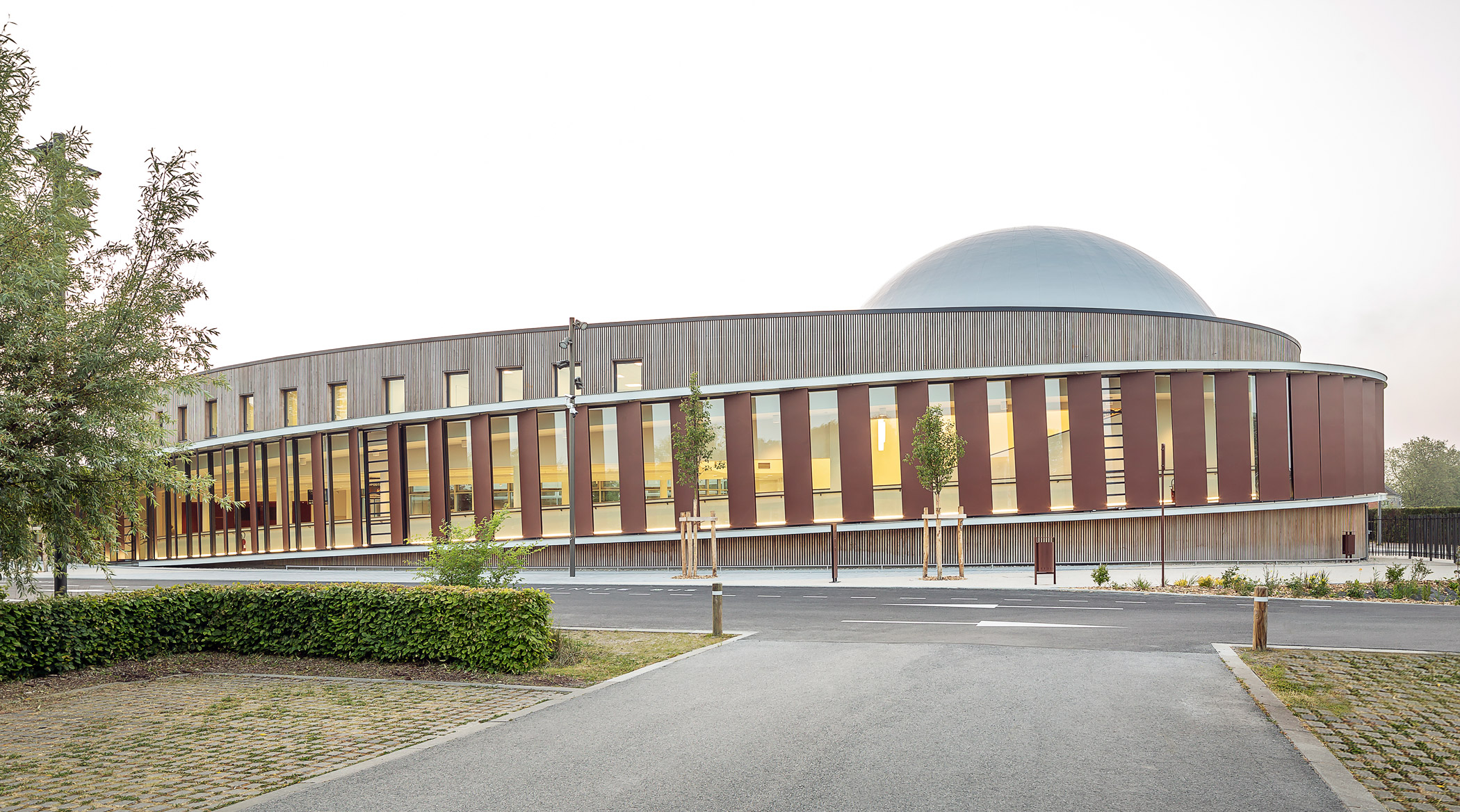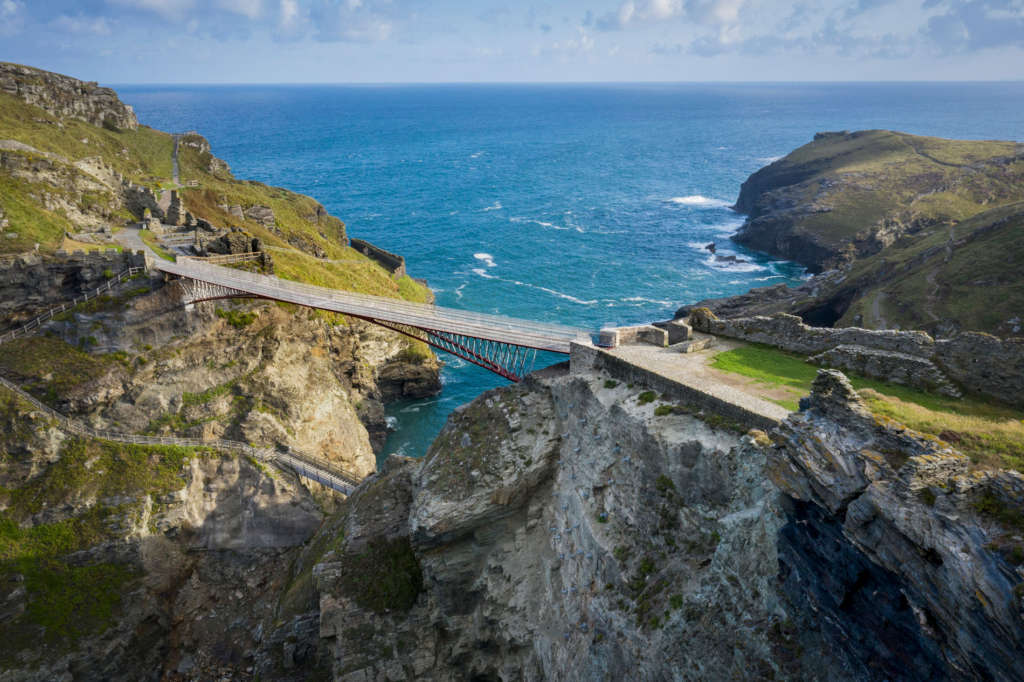
Tintagel Castle Footbridge
Architect: William Matthews Associates
Engineer: Ney & Partners
Location: Cornwall, England
Type: Bridge
Year: 2019
Photographs: Courtesy of English Heritage
The following description is courtesy of English Heritage. For the first time in more than 500 years, the two separated halves of Tintagel Castle will be reunited thanks to a daring new footbridge unveiled by the charity English Heritage today (Thursday 8 August 2019). From Sunday 11 August, visitors will be able to walk in the footsteps of the medieval inhabitants of the Cornish castle – inextricably linked with the legend of King Arthur – and enjoy spectacular coastal views not seen since the Middle Ages.
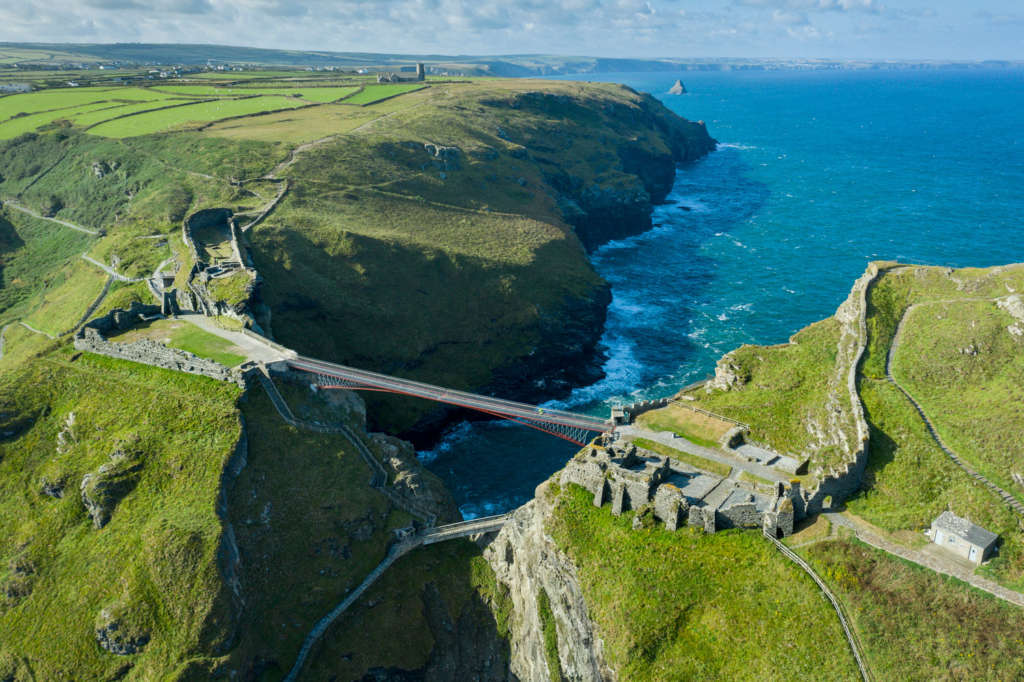
Spanning a 190-foot gorge and with a gasp-inducing gap in the middle, the bridge follows the line of the original route – a narrow strip of land, long lost to erosion – between the 13th-century gatehouse on the mainland and the courtyard on the jagged headland or island jutting into the sea. So significant was this historic crossing that it gave rise to the place’s name, the Cornish Din Tagell meaning “the Fortress of the Narrow Entrance”.
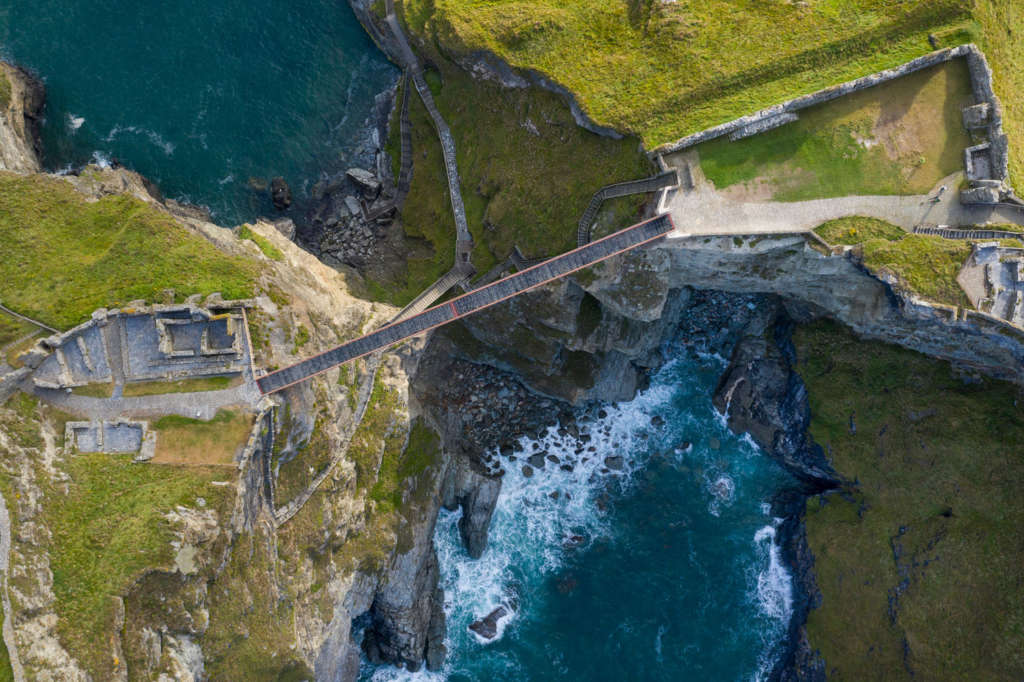
The medieval scholar Geoffrey of Monmouth wrote that this land-bridge was so narrow that “three armed men would be able to defend [it], even if you had the whole kingdom of Britain at your side”. Legend has it that the King of Britain, Uther Pendragon – transformed by the wizard Merlin into the likeness of the Duke of Cornwall – stole across this passage way into the castle where he spent the night with the Duke’s wife, Ygerna, who later gave birth to the future King Arthur. So impressed was Richard, Earl of Cornwall by the Arthurian myth that in the 1230s and 1240s he built a castle at Tintagel, with the land-bridge an integral part of its design.
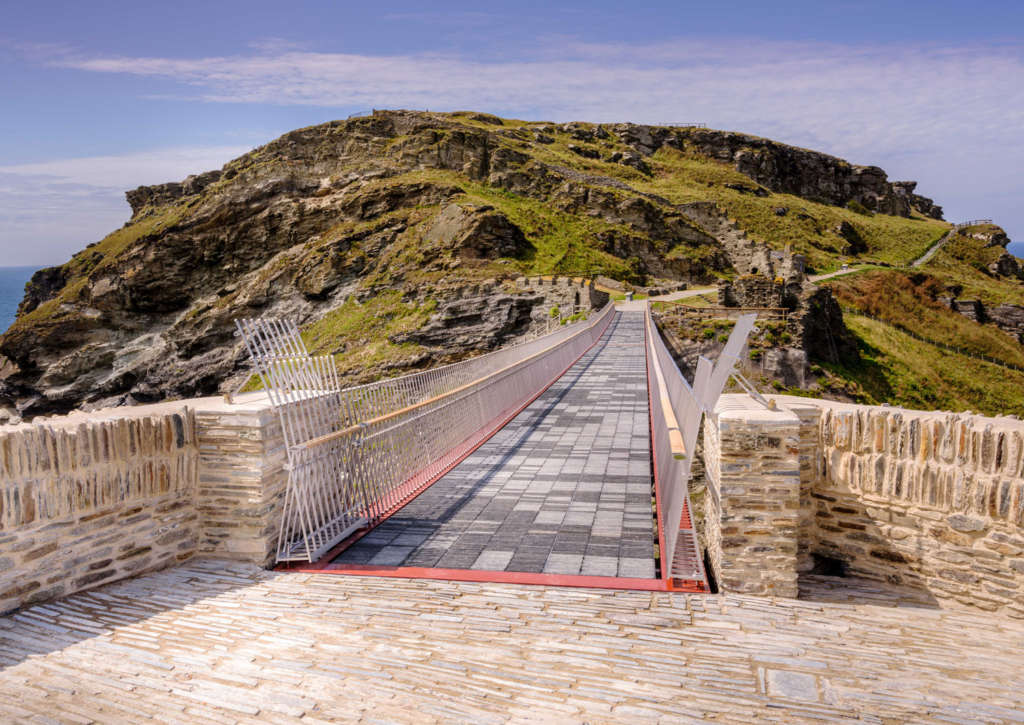

Photo by Jim Holden. Courtesy of English Heritage 
Photo by Jim Holden. Courtesy of English Heritage 
That crossing vanished in the 15th or 16th century but now English Heritage has restored it, replacing the original rock, earth and grass with a footbridge of steel, local Cornish slate, and oak. Built in Plymouth and designed by Ney & Partner engineers and William Matthews Associates Architectural Practice, the bridge consists of two independent cantilevers of approximately 30 metres length each that reach out from either side to – almost – touch in the middle. At the centre of the bridge, a narrow gap (40mm) has been designed to represent the transition between the mainland and the island, the present and the past, history and legend. The elegant bridge complements the outstanding landscape and unlocks for the visitor the history of the site.

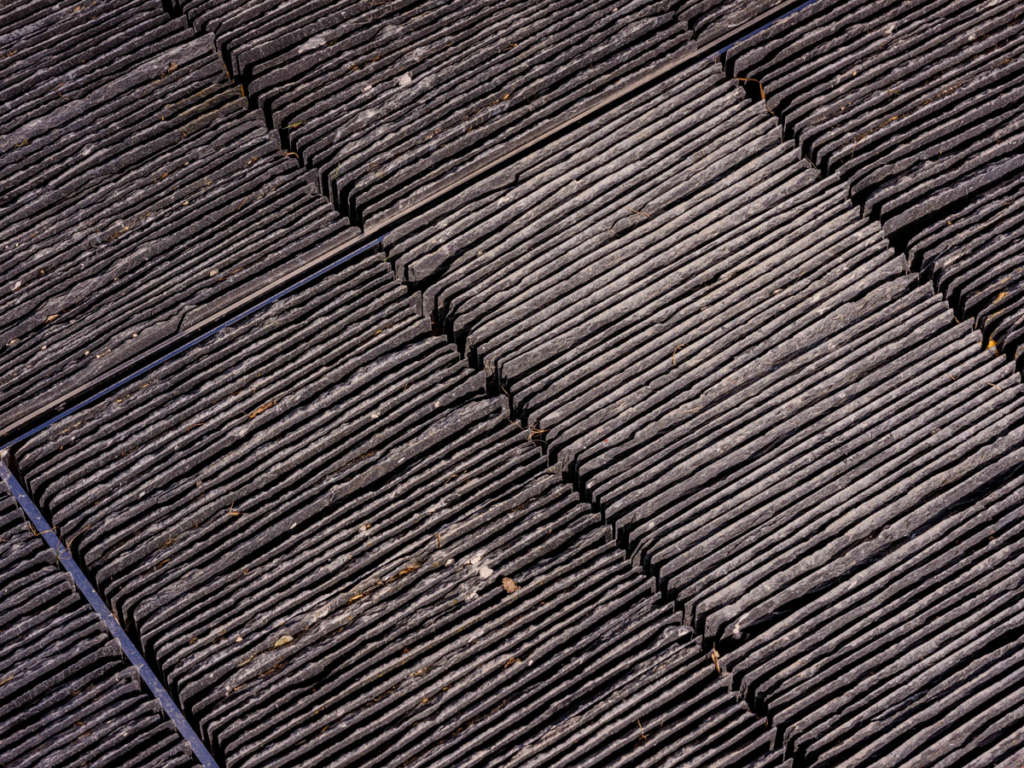
Kate Mavor, English Heritage’s Chief Executive, said: “Tintagel Castle has been made whole again. Once more, people will cross from one side of the castle to the other and their footsteps will echo those from hundreds of years ago.
As a charity, English Heritage’s core purpose is to care for historic sites like Tintagel Castle and to inspire people to visit them. Our new Tintagel bridge does both – protecting the castle’s archaeology and bringing its story to life in a brilliant, imaginative way.”
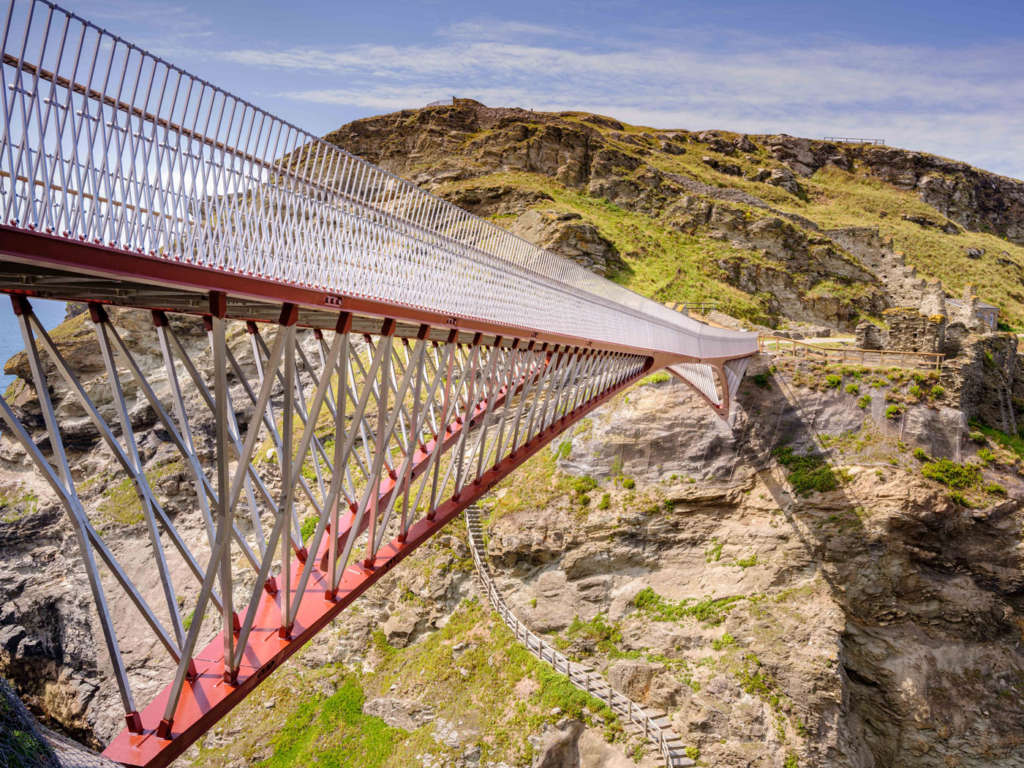

Photo by Jim Holden. Courtesy of English Heritage 
Photo by Jim Holden. Courtesy of English Heritage
Tintagel Castle welcomes almost 250,000 visitors each year and the new footbridge will help to reduce congestion – especially at peak periods – and provide a step-free route onto the island, helping more people to enjoy a visit to the castle.
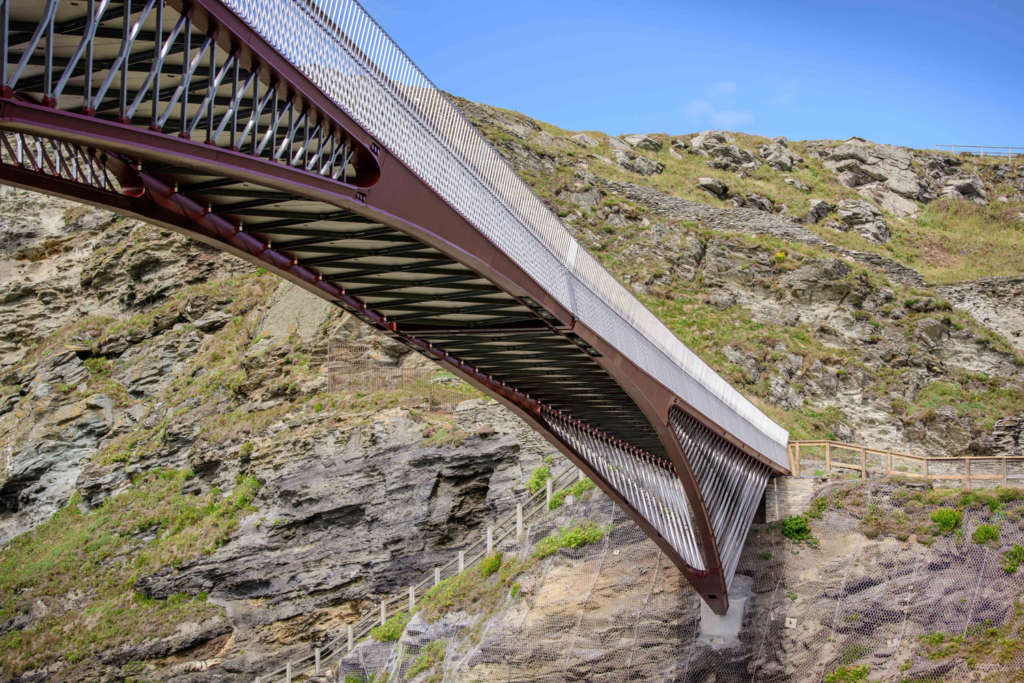
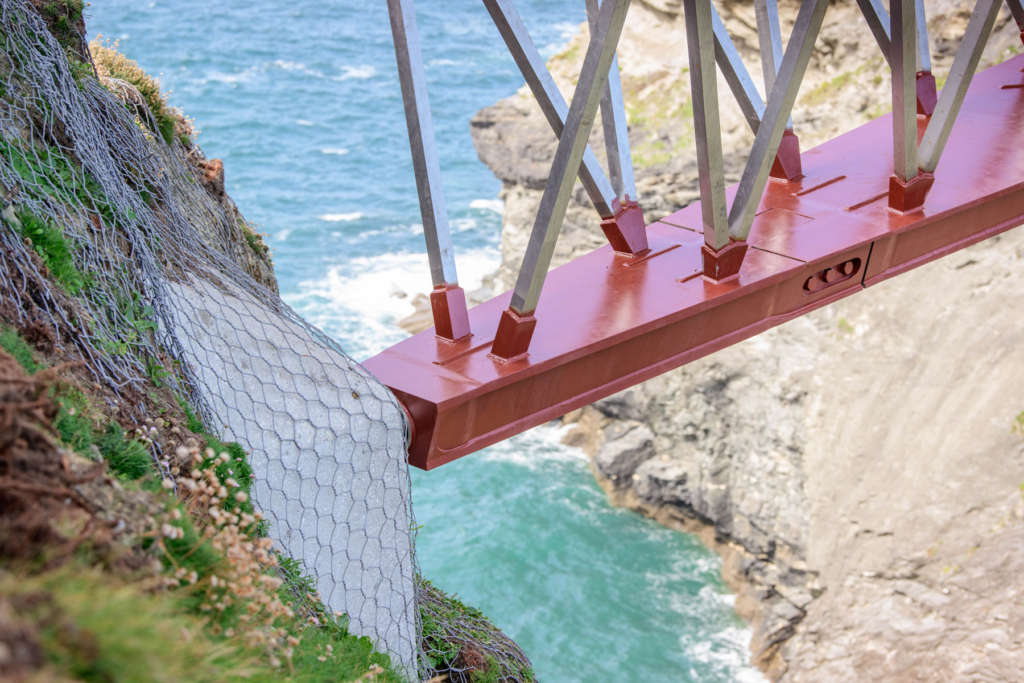
The bridge at Tintagel Castle is part of a larger £5m programme of works by English Heritage which includes improving the footpaths around the site, helping to limit the impact of visitors on the castle’s unique archaeology and ecology.
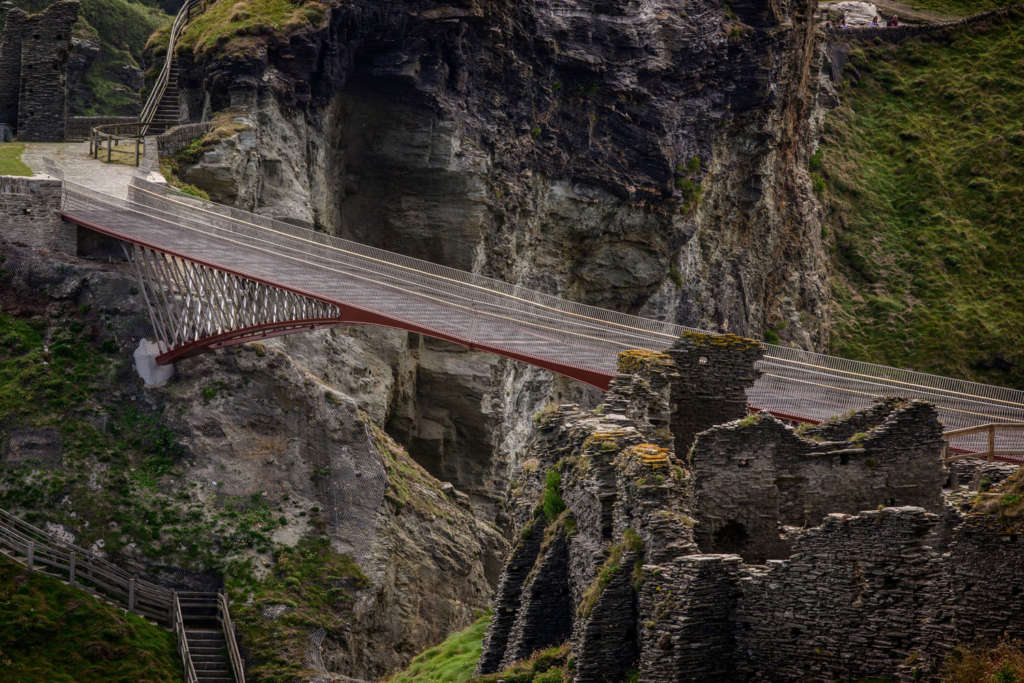
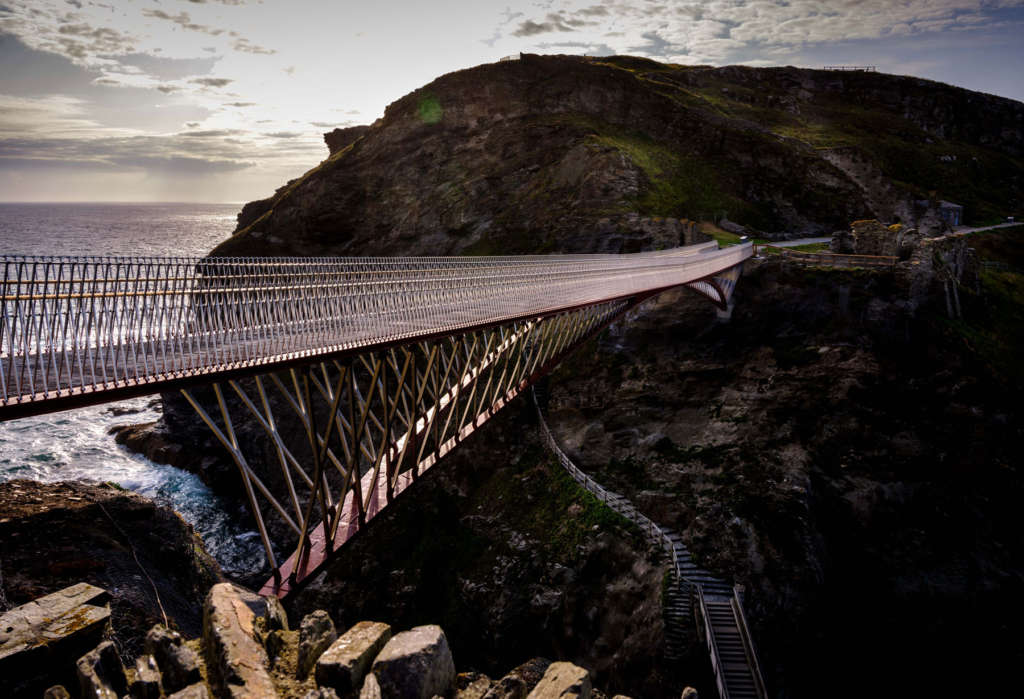
Timed ticketing has been introduced to manage the number of people visiting the historic site. Tickets can be pre-booked through the English Heritage website. A limited number of on-the-day tickets will also be available to purchase at Tintagel Castle.
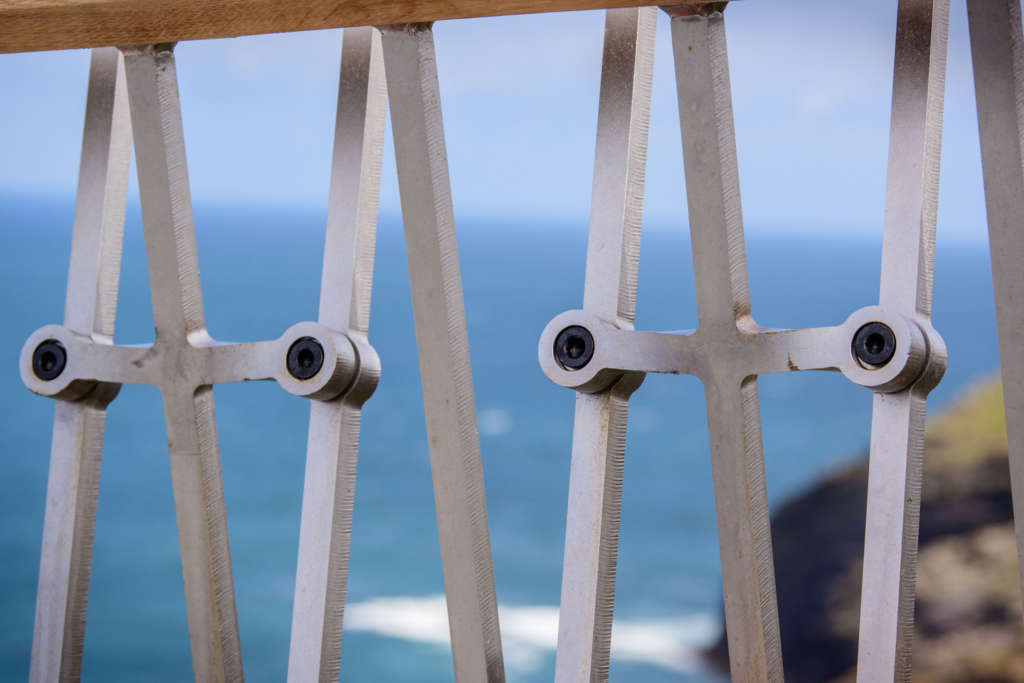
Julia and Hans Rausing generously donated £2.5m towards the project, the largest single private donation ever received by the conservation charity, English Heritage. A thousand members of the public also donated to the bridge, each marking their £5 contribution by signing one of the Cornish slates which form the walkway of the bridge. All the donations mean that English Heritage can now invest more of its funds towards the protection and conservation of historic castles throughout Cornwall and beyond.
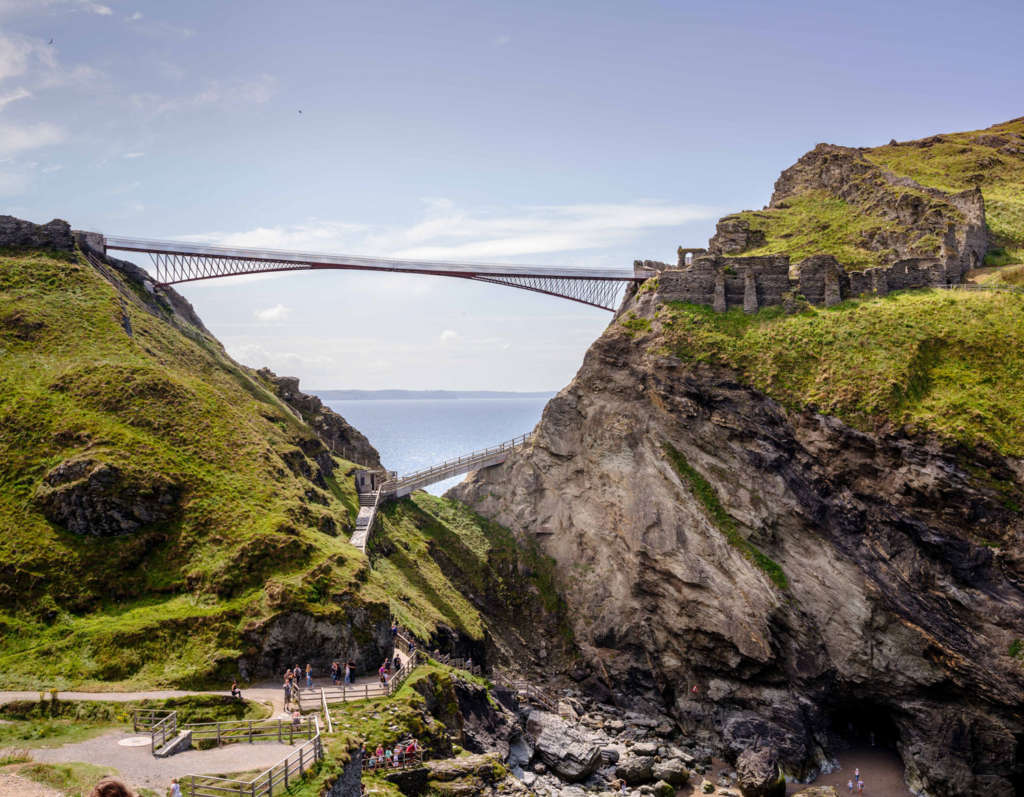
Tintagel Castle – complete with its new footbridge – reopened to the public on Sunday 11 August 2019. For more information, visit www.english-heritage.org.uk/tintagel
Tintagel Castle Footbridge – In Numbers
• 2 independent cantilevers of approximately 33 metres length each
• 40mm gap in the centre
• 57 metres above sea level
• 47.5 tonnes of steel
• 40,000 local Delabole slate tiles, hand cut from a quarry just 3 miles from Tintagel
• 140 metres of oak
Project Details
- Architect practice: Ney & Partners and William Matthews Associates
- Additional Architect practice: William Matthews Associates
- Date of completion: August 2019
- Client company name: English Heritage
- Project city/town: Cornwall
- Contract value: £3,500,000.00
- Cost per m²: £20,000.00 / m²
- The construction cost of the bridge equates to £20,000/m2 for the bridge alone excluding the external landscaping costs
- Contractor company name: American Bridge UK
Consultants
- Structural Engineers: Ney & Partners
- Landscape Architects: Nicholas Pearson Associates
- Quantity Surveyor /Cost Consultant: Faithful & Gould
- Geotechnical Engineers: Ramboll Local
- Structural Engineer: HRW Engineers
- Planning Consultant: CSJ Planning
- Wind tunnel testing & vibration analysis: RWDI








